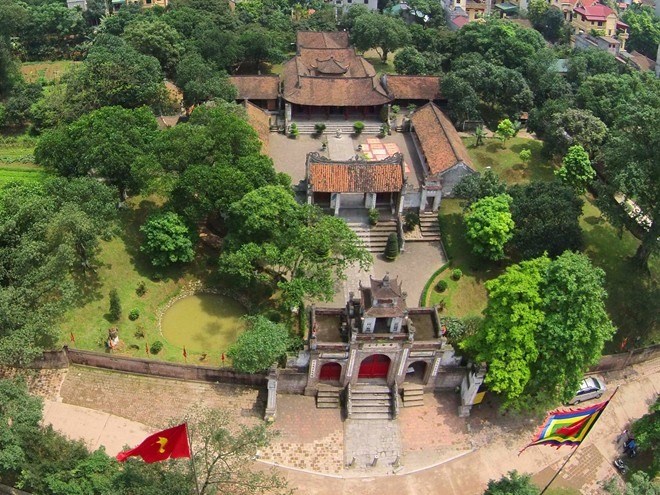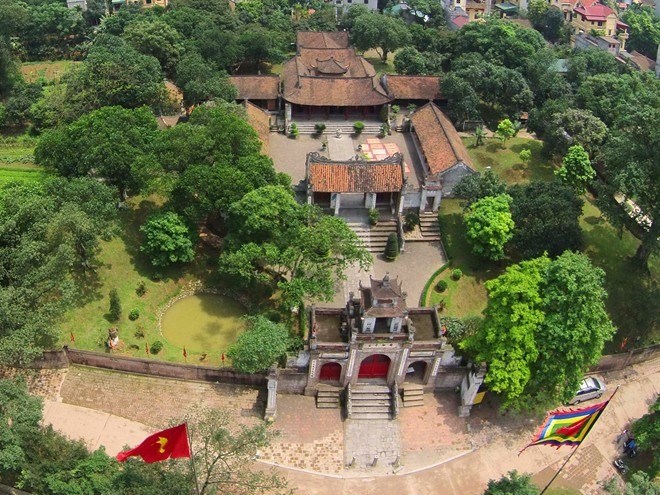



Co Loa
Citadel is a unique 2,300-year-old relic of Vietnam. (Photo: thegioidisan.vn)
Hosted by Tia Sang Magazine, the "Co Loa: From
Core Values to Preservation and Development” conference was held because the
relic site faces encroachment and damage despite the city’s efforts to protect
the citadel, which is also one of the oldest relics of Vietnam. The conference
gathered many renowned Vietnamese experts as well as members of heritage
management boards.
With its unique historical, architectural and archeological value, the citadel
was recognised as a national relic since 1962 and as special national relic
since 2012.
Before 1995, the Co Loa Citadel was managed by local authorities before being
handed over to several management boards. It was not until 2014 that the
management board of the citadel was officially established as a unit under the
Thang Long- Hanoi Preservation Centre.
A master plan on the preservation and restoration of the Co Loa Citadel in
Hanoi to develop the site into a historical and ecological park was approved in
2015 by then-Prime Minister Nguyen Tan Dung.
According to the Co Loa Citadel Management Board, the relic is now under
serious encroachment due to the low awareness of locals. For example, they
cultivate crops even on the city wall, raise fish in the dyke and have even
been granted land ownership. Some parts of the citadel have become roads. Many
components of the relic with special archeological values have nearly been
vanished due to the expansion of nearby residential buildings.
However, the functions of the management board include inspecting, discovering
and reporting violations but not penalizing violators; however, most of their
reports to the local authorities have not received any responses yet.
According to Le Viet Dung, deputy chief of the Co Loa Citadel Management Board,
they are granted permission to manage the core of the relic, including the
Inner Citadel, An Duong Vuong King Temple or Ngoc Well, as well as several
lands nearby their head office, covering a total area of four hectares.
Meanwhile, the other parts of the relic, which is nearly 900 hectares, and
three rounds of the earth walls are under control of the local authorities and
citizens who consider them as normal land, not a relic.
Professor Nguyen Van Huy judged that with proper vision and investment, the
citadel would become one of the most attractive destinations to tourists of the
capital, largely due to the associated historical stories and well-preserved
natural surroundings. However, such tourism potential faces the risk of
encroachment amid rapid urbanization and people’s demand to improve their
lives, he said.
He also mentioned the emerging problems of the relic’s poorly defined borders,
as well as its direct managers and their duties. "The management lacks
unification, synchronization and concentration,” he added.
The United Nations Educational, Scientific and Cultural Organisation (UNESCO)
have issued guidance on tourism management within heritage sites, which have
clarified that every sustainable tourism programme demands the involvement of
the beneficiaries or concerned organisations. The "awakening” of the heritage
therefore requires state policies and enterprises’ investment.
According to Tran Thi Thu Thuy from the Cultural Department of UNESCO,
encouraging the community’s involvement demands building trust. "The local
authority must publicise all the information about the policies of development,
interact with the locals and ensure their commitment,” she said.
PhD Nguyen Thi Hau, Deputy Secretary General of the Vietnam History
Association, also stressed the importance of community input. She suggested
that the preservation with community involvement should originate at the
grassroots level to ensure sustainability, because only the community,
individuals and social organisations are capable of preserving the heritage and
helping the heritage co-exist with the community. This strategy has proved
effective in many heritages worldwide like Angkor Wat temple complex in
Cambodia
"We are preserving the heritage with a ‘downwards’ point of view. Viewed from
above, only economic or political benefits can be seen, not the locals’ needs.
If viewing from the locals’ position, the authority will understand their
problems and simultaneously help them realise what they need to do to preserve
the relics, to develop tourism and how they will benefit, she stressed.
Reckoning that it’s better late than never, Professor Huy added that in order
to promote the values of the Co Loa Citadel, leaders of Hanoi need to renovate
their viewpoint and prioritise boosting the relic to become the most
highlighted attraction of the capital.
The Co Loa Citadel was built near Phong Khe, about 20 km to the north of today’s
Hanoi, during the end of the Hong Bang Dynasty (about 257 BC).
Covering nearly 500ha, the citadel is a place of worship for King An Duong
Vuong and Princess My Chau, who are mentioned in the magic crossbow legend that
has been woven into the history of Vietnamese people.
According to folklore, An Duong Vuong founded the ancient Vietnamese state of
Au Lac and chose Co Loa as the capital city.
Source: VNA